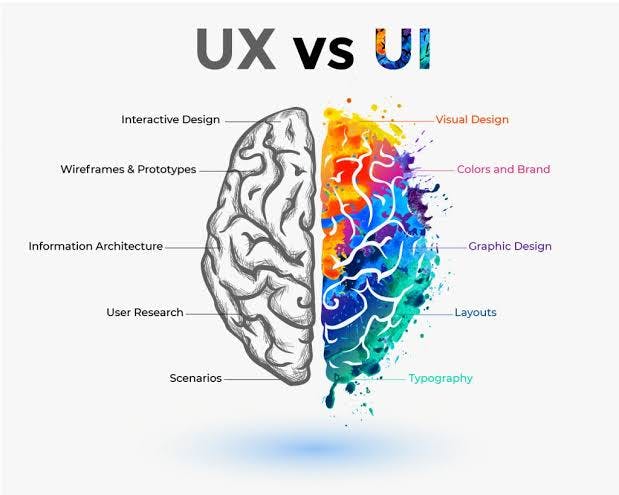You have probably heard the term UI/UX constantly mentioned in tech spaces and conversations. If you are a curious person like me, you rushed through to search what UI/UX design stands for before looking up what they do. These are terms that many people use interchangeably, but how different are they?
Well, don't let that stress you. Come with me as I take you through distinct definitions to help you differentiate the two and, more importantly, gain a general understanding as a beginner.
What Is the Difference Between UX and UI?
First things first, UX stands for User Experience, while UI stands for User Interface. The difference between UX and UI is that UX is what the user feels when interacting with a physical or digital product. At the same time, UI refers to the aesthetic or, rather, the look of a product, mostly digital products.
Simply put, UI focuses on visual elements such as colors, typography, icons, buttons, and menu bars, to mention a few. UX focuses on a user's experience using a product or service.

What Is the Focus Area for UX Designers?
Now that we know what UI and UX design are, it is only wise to understand how this translates to each designer's daily tasks. Typical daily tasks for a UX Designer revolve around these four components. Read this guide for a detailed explanation of the UX process.
- Researching - Involves conducting user research to identify goals, needs, and behaviors while interacting with the product.
- Ideating - Involves designing customer journey map of how a user interacts with a product.
- Designing - UX designers translate a concept into a rough draft by creating wireframes and prototypes.. They use software such as Figma, Sketch, among others.
- Communicating - Collaborate with stakeholders, UI designers, and developers.
What Is the Focus Area for UI Designers?
On the other hand, UI designers focus on the following areas when designing a product. Find a UI Design comprehensive guide here.
- Look and Feel - This will include design research, customer analysis, graphics design, branding, and creating user guides and stories.
- Responsiveness and interactivity - They work designing prototypes for the interface, animations, and other interactive elements, adapting the software to all screen sizes and implementation.
Clearly, UI is a necessary role for any digital product or service since it is a key element in branding and other roles in product development.
Where Do UX and UI Design Meet?
Now, let's explore how UX and UI work together. Clearly, UX and UI marry each other. They both play a role in product design.
You might have come across products with one and lacking the other. The success of these products would have been far better if both the UX and UI designs were great.
A good example is the ketchup bottle. The glass ketchup bottle has a good look but poor usability when it comes to squeezing the bottle, especially when the ketchup is running up. Contrarily, the plastic ketchup bottle with the top facing down is easy to squeeze, providing a much better experience. This is a classic case of good UI and poor UX affecting usability.
Bottomline
The key takeaway is good UI cannot make up for bad UX and vice versa. UX and UI complement each other. Whether you choose to be a UX designer, it is important to have an understanding of UI design. After all, these two roles require an inevitable collaboration. What are your thoughts on this? Let me know in the comments.
